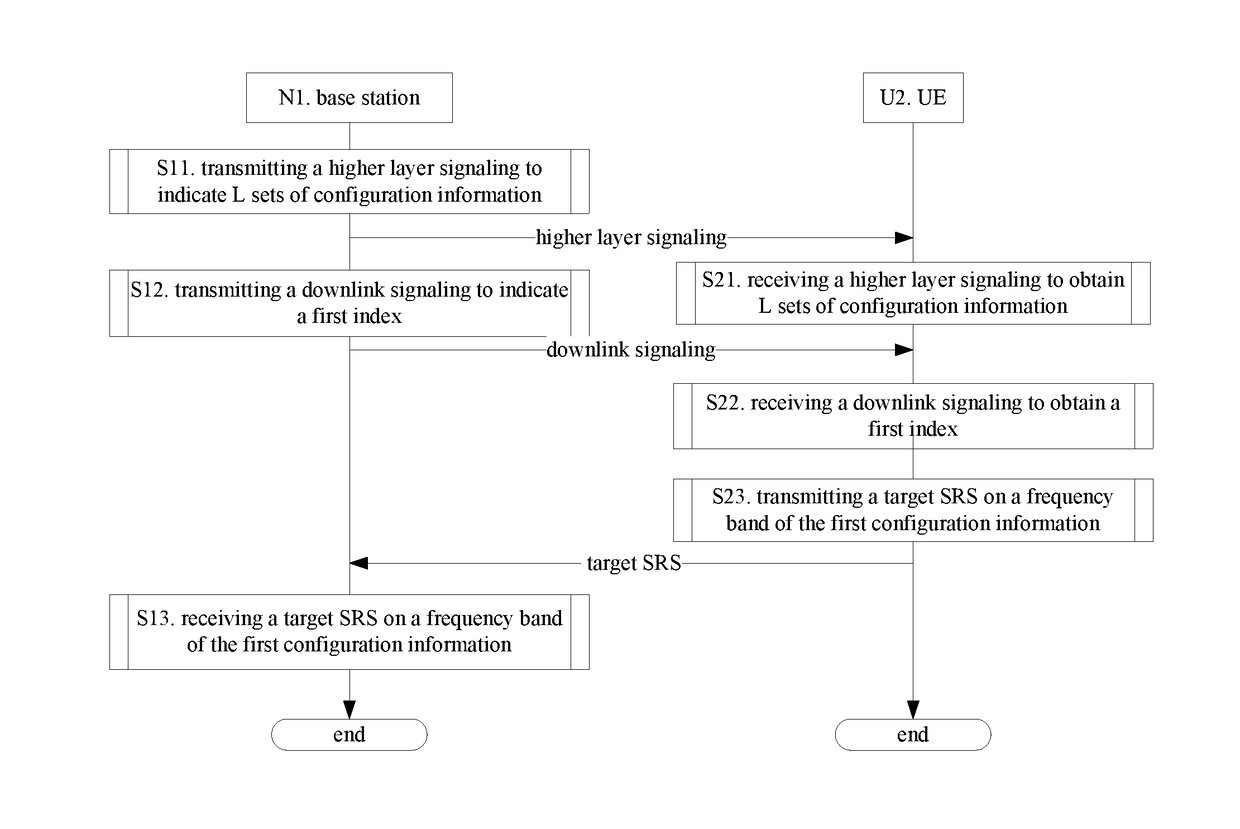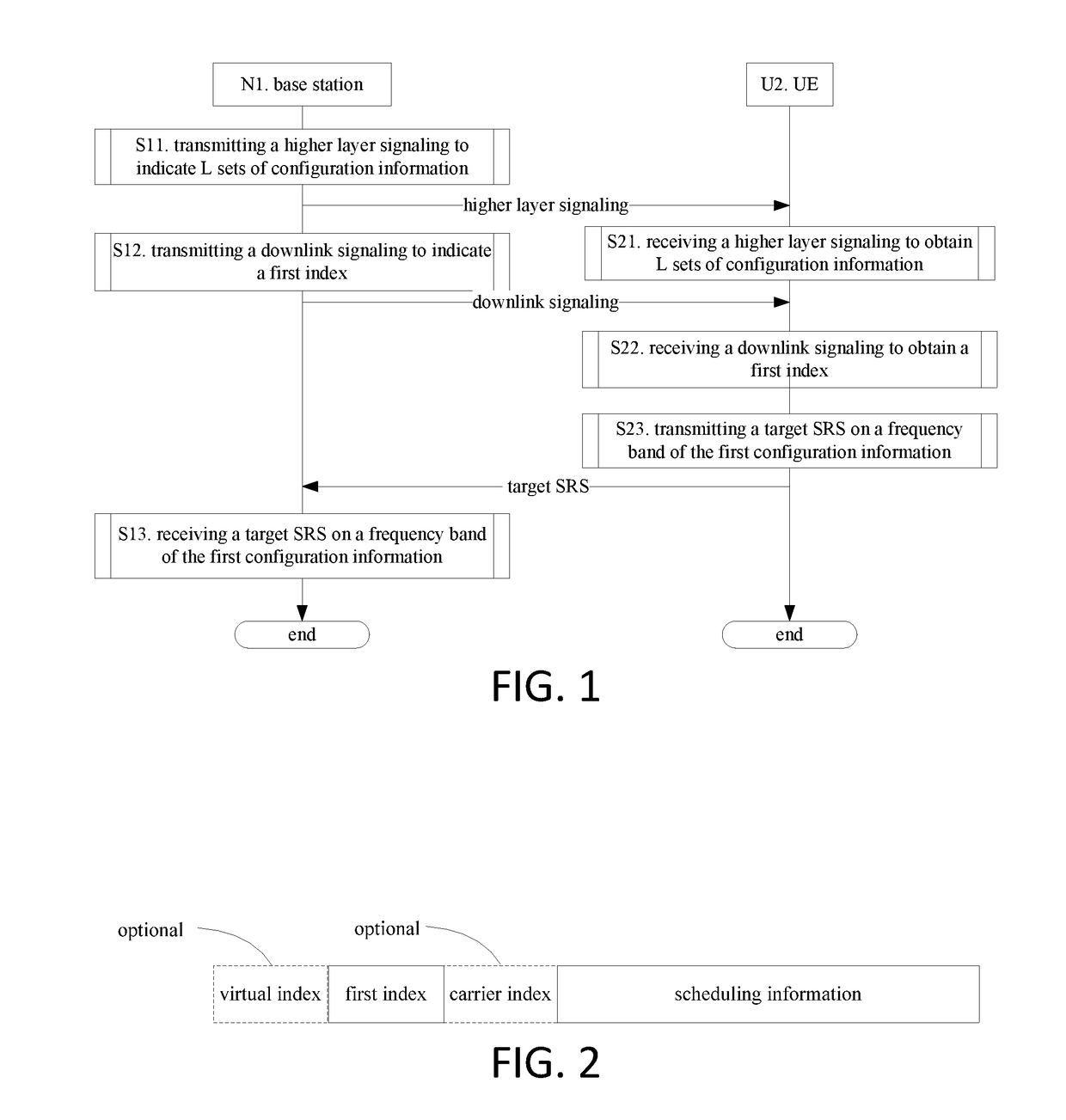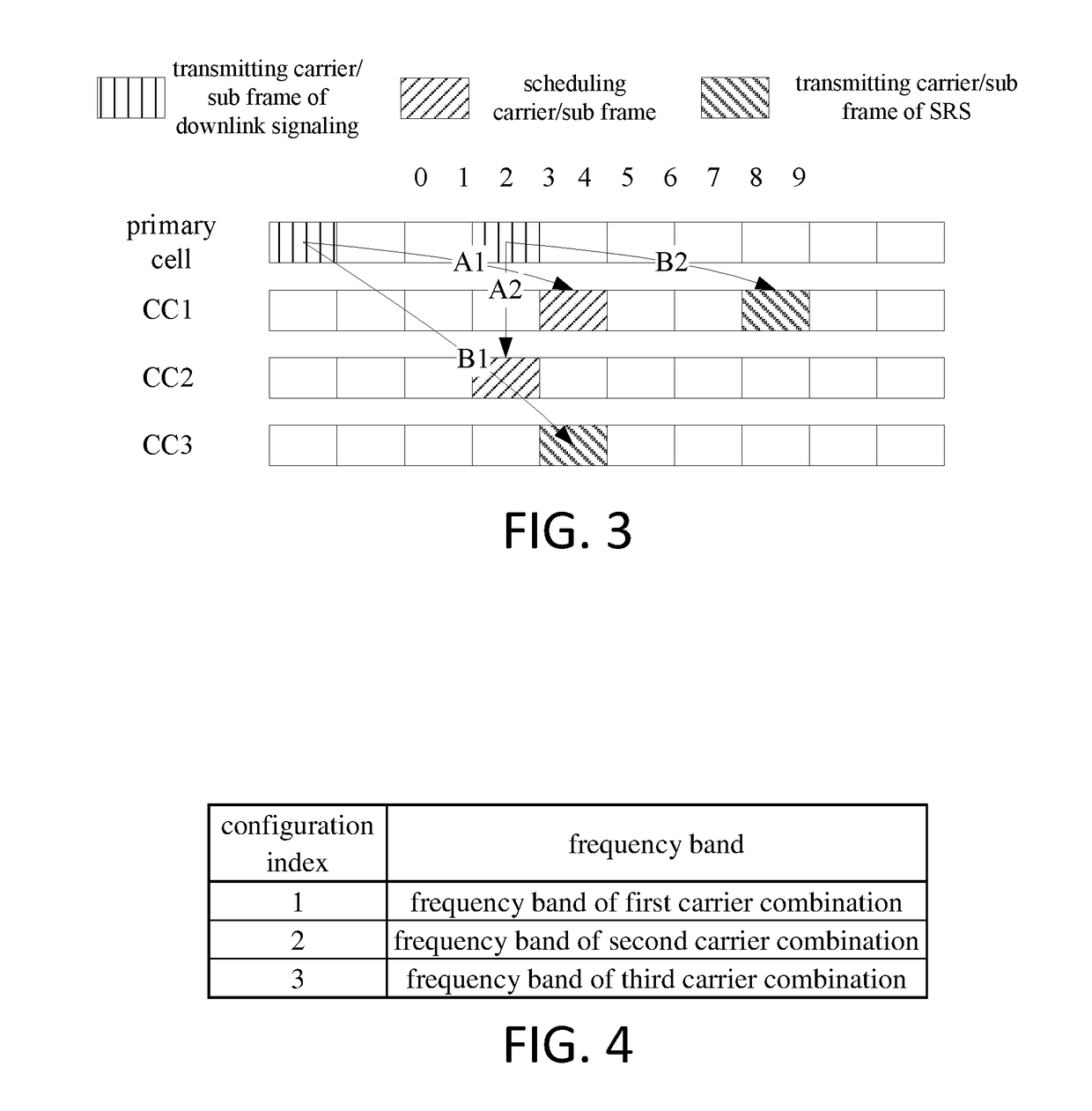Method and device for aperiodic srs in ue and device base station
a technology of aperiodic srs and a base station, which is applied in the direction of data switching networks, wireless communication, transmission path division, etc., can solve the problem that the licensed spectrum is difficult to meet the demand of communication amount, and achieve good compatibility
- Summary
- Abstract
- Description
- Claims
- Application Information
AI Technical Summary
Benefits of technology
Problems solved by technology
Method used
Image
Examples
embodiment i
[0075]Embodiment I illustrates a method for dynamically scheduling SRS on an unlicensed spectrum, as shown in FIG. 1. In FIG. 1, the base station N1 is a service base station for the user equipment (UE) U2.
[0076]For the base station N1, in step S11, the method involves transmitting a higher layer signaling, wherein the higher layer signaling includes L sets of configuration information, and one set of configuration information includes a configuration index and a frequency band; in step S12, the method involves transmitting a downlink signaling, and the downlink signaling includes a first index; in step S13, the method involves receiving a target SRS on a frequency band of the first configuration information, wherein the first configuration information is one set of configuration information with the configuration index equal to the first index in the L sets of configuration information.
[0077]For the UE U2, in step S21, the method involves receiving a higher layer signaling, wherein...
embodiment ii
[0082]Embodiment II is a schematic diagram illustrating a downlink signaling, as shown in FIG. 2. In FIG. 2, the downlink signaling includes a virtual index, a first index, a carrier index and scheduling information, wherein the virtual index and the carrier are optional—indicated by a dotted line. FIG. 2 describes an information type included in the downlink signaling. Unless otherwise stated, FIG. 2 does not limit a position of the information type of the downlink signaling.
[0083]For the base station, firstly, a higher layer signaling is transmitted, wherein the higher layer signaling includes L sets of configuration information, and one set of configuration information includes a configuration index and a frequency band; a downlink signaling is transmitted, and the downlink signaling includes a first index; a target SRS is received on a frequency band of the first configuration information, wherein the first configuration information is one set of configuration information with t...
embodiment iii
[0089]Embodiment III is flowchart of a method for dynamically scheduling SRS on a plurality of carriers, as shown in FIG. 3. In FIG. 3, a primary cell is deployed on the licensed spectrum, CC1-CC3 are deployed on the unlicensed spectrum, a square indicted by a vertical line is the transmitting carrier and the sub frame of the downlink signaling, a square indicated by a slash is the transmitting carrier and the sub frame of the physical layer data scheduled by the downlink signaling, and a square indicated by a backslash is the transmitting carrier and the sub frame of SRS scheduled by the downlink signaling.
[0090]For the base station, firstly, a higher layer signaling is transmitted, wherein the higher layer signaling includes L sets of configuration information, and one set of configuration information includes a configuration index and a frequency band; a downlink signaling is transmitted, and the downlink signaling includes a first index; a physical layer data is processed accord...
PUM
 Login to View More
Login to View More Abstract
Description
Claims
Application Information
 Login to View More
Login to View More - R&D
- Intellectual Property
- Life Sciences
- Materials
- Tech Scout
- Unparalleled Data Quality
- Higher Quality Content
- 60% Fewer Hallucinations
Browse by: Latest US Patents, China's latest patents, Technical Efficacy Thesaurus, Application Domain, Technology Topic, Popular Technical Reports.
© 2025 PatSnap. All rights reserved.Legal|Privacy policy|Modern Slavery Act Transparency Statement|Sitemap|About US| Contact US: help@patsnap.com



